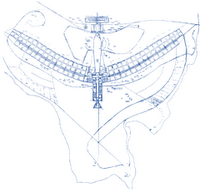Current Investments in the Brazilian Healthcare Infrastructure
As is widely known, the Brazilian public sector health services network (SUS1) is quite unique and different from that of any other country in Latin America. The Ministry of Health owns and runs (through the SUS) 75% of all ambulatory services in the country, but 80% of hospitals providing services through the SUS are private, a network comprised of more than 65,000 outpatient clinics and 6,000 hospitals.
It is currently estimated that 25% of Brazilians use a private system and are covered by private health insurance plans. The remaining 75% use either public or private hospital services that are fully or partially funded by the government, using resources provided by a constitutional amendment which set a floor for aggregate federal spending, placing Brazil among the countries with high levels of public expenditure on healthcare in relation to the GDP.
In the last ten years, in response to the growing demand of the population for health services, the Brazilian government has had to allocate additional funds to the SUS network, expanding it through additional investments and contracting of private institutions to provide services.
In 2008, the Brazilian Government invested U$ 25 Billion in the health sector, which is equivalent to spending US$ 280 per capita. Even though this sum is above the Latin American average, it does not reach half of the world average which is U$ 806 per capita. Considering the percentile of the resources invested, the Brazilian expenditure drops to little above half of what is spent by its Latin neighbors. By comparison, in the year 1990, all of the countries of the Latin American and Caribbean regions spent together about US$ 69 billion on healthcare, with an average per capita health expenditure of US$ 162. On average, the countries spent 6.2% of their GDP on health,
Nowadays, several Brazilian states and municipalities are also investing sizeable sums to renovate and modernize its healthcare institutions. The government of São Paulo, for instance, started its own program of investments in the health sector, helping its municipalities to refurbish and re-equip their public network of basic-care units and family-health units. Since April, more than US$ 6 million were distributed to 523 districts, covering more than 80% of the state.
In the private sector, there are also signs of optimism, as many institutions are investing good sums in their units, such as the Heart Institute (INCOR) that recently was granted about US$ 25 million to revitalize its infrastructure. With these resources, the hospital plans to acquire many new items, such as equipment and furniture.
The Israeli Hospital Albert Einstein, which belongs to the Sociedade Beneficente Israelita Brasileira, a Jewish-Brazilian charitable association, recently unveiled its new US$ 200 million, 85,000m2 building, a project of the Albert Khan Office, which includes 200 consultation offices, 40 Day-Clinic beds and a brand-new image and surgery wing, with 20 new operating rooms, as part of their 4 year investment-plan which has already doubled the hospital’s capacity.

Another major player, the Sírio Libanes Hospital, will start building a new 18 store, 15,000 m2 tower, in a direct investment of about U$ 175 million, and has also announced that another US$ 100 million will be used to renovate the existing buildings. The Nossa Senhora de Lourdes Group, which is investing about US$ 20 million in a new building and has plans to double its Child Care unit from 6 to 9,000m2. The Oswaldo Cruz Hospital, also in São Paulo, is opening the doors of its new Prostate Center, the first dedicated to this specialty in the country, and the Samaritan Hospital is investing in the construction of a new 15 store building with flexible floor-space, which will allow them to quickly install a new ICU or new inpatient suites at any given time.
As for the participation of international funding organizations, there have been many cases of partnership to help improve the healthcare network in Brazil. For example, the World Bank has a long history of providing financing for needs, such as health infrastructure upgrading. Its strategy in Brazil has been based mainly in the provision of resources for expanding the accessibility of basic health services in poor or marginal areas and offering policy advice and studies for improving the efficiency and efficacy of the health care system. For instance, the Bank participated, in conjunction with the IDB, in the health sector reform project, known as ReforSUS, which invested about US$ 750 million between 1997 and 2004. More recently, the Bank has agreed to support the Health Ministry to further improve the quality and effectiveness of the public network via the Health System Quality Improvement Project - QualiSUS2, which will include a total loan financing of US$ 235 million, with a counterpart of US$ 442 million from the government, to be spent during an 8-year period.
The IDB, the biggest development lender for Latin America, has been a continuing player in the Brazilian healthcare sector, having also taken part in the ReforSUS project of the nineties. Recently, the Bank decided to support the northeastern state of Ceará to expand its health care services and promote better integration among the different levels of care, with the help from a US$ 77 million loan. The construction of a regional hospital in the region of Sobral, nine polyclinics and 11 dental clinics are included in this project. The loan will also finance the acquisition of medical and dental equipments for the new facilities and measures to improve health care management and the quality of services.
Sources:
www.saude.gov.br www.albertkahn.com www.hospitalalemao.org.br www.saudebusinessweb.com.br www.agenciabrasil.gov.br www.diagnosticosdaamerica.com.



Comentários
Postar um comentário